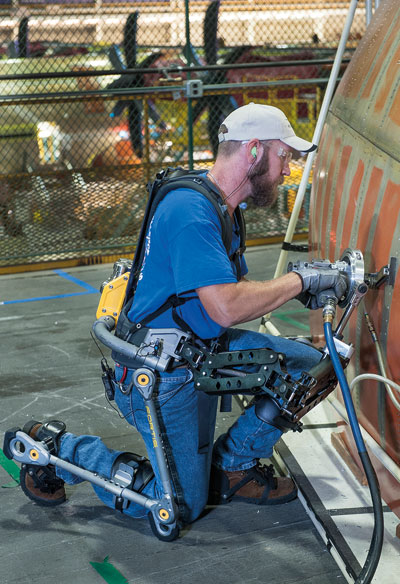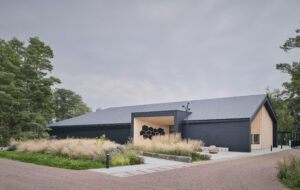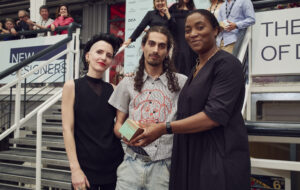|
|
||
|
Originally designed for the US Navy, this light, mobile suit allows the wearer to handle heavy apparatus without bearing any of the weight. It has a huge range of potential applications across warehouses, factories and construction sites – allowing robotic equipment to become more human Exoskeletons may have the tang of Hollywood, but Lockheed Martin has displayed a steely and fantasy-free determination in launching the first viable product for the industrial market. Fortis, a light, mobile and affordable suit, is intended for those handling heavy appliances such as grinders or riveters in demanding, irregular environments, but its medical implications are tantalising. The unit channels its own 13kg weight, as well as those of any mechanical arm or tool attached, directly to the ground, bypassing the human muscloskeletal system – the wearer has merely to manage the load. Its joints are designed to mimic those of the body, moving in concert with the user, and, once the exoskeleton is adjusted for height and width, wearers can be suited up in less than a minute. The Fortis exoskeleton was launched in August last year as part of a concerted effort to expand beyond Lockheed Martin’s traditional defence interests. It has been evolved from a powered military predecessor – Hulc – that itself shares technology with the experimental bionic suits for the disabled being designed in California by Ekso Bionics. For reasons of functionality and economy, Hulc’s battery packs, hydraulics and microprocessors were jettisoned when developing Fortis. As Trish Aelker, Exoskeleton Technologies’ programme manager, explains, “During Hulc trials for the US Navy, we discovered the need to offload the weight of heavy tools in shipyards. Workers were experiencing severe muscle fatigue, but it turned out you didn’t need a powered system, which is better adapted to reducing metabolic costs when soldiers carry loads long distances. In shipyards, you can reduce the exoskeleton’s complexity, and thus its production and upkeep costs, with an unpowered system.” To help ensure that Fortis remains affordable, the bulk of the suit is made of aluminium: “We needed a material that would support the load of the tools, and was also lightweight – aluminium isn’t nearly as expensive as the titanium used for Hulc, and is far more readily available.” With a sober grey-and-yellow aesthetic befitting its industrial intent, Fortis certainly has the market firmly in mind rather than pandering to the wilder fantasies of techno-fetishists.
The exoskeleton’s joints mimic those of the human body One of the most eye-catching aspects of its current incarnation is the ZeroG mechanical arm by US firm Equipois. Evolved from 1970s Steadicam technology, it is usually attached to factory platforms, allowing industrial tools or parts weighing up to 16.3kg to be manoeuvred as if weightless, boosting productivity and avoiding stress or impact injury. Originally launched in 2008, the ZeroG arm was already in use by Lockheed Martin’s own aerospace division – as well as by manufacturers such as Toyota, Airbus and Caterpillar – bringing it to the attention of the exoskeleton team. With the addition of both rapid-release attachment brackets and an adjustable counterbalancing assembly at the hips, Fortis channels the combined load of the arm and its tools directly to the ground, ensuring that the ZeroG becomes an extension of the human body. Trials proved so successful that Lockheed Martin has started developing its own arm units for users of lighter tools. Two completed Fortis units have now been delivered to the US Navy and, according to Aelker, it is also “being piloted throughout Lockheed Martin to see where it can best be used.” International and domestic interest has been brisk: “We’re demonstrating Fortis for numerous applications, and are looking to adapt it for industries that have expressed an interest, such as mining, warehousing and first responders. People, including universities and media, seem to really gravitate towards this technology because it can be invaluable in so many areas – we’ve had interest from all over the spectrum. And, to be honest, when I got the opportunity to work on this, I jumped on it too.” Even in this restrained, functional guise, the bionic fantasies of the big screen are finally becoming a reality. |
Words John Jervis |
|
|
||





















